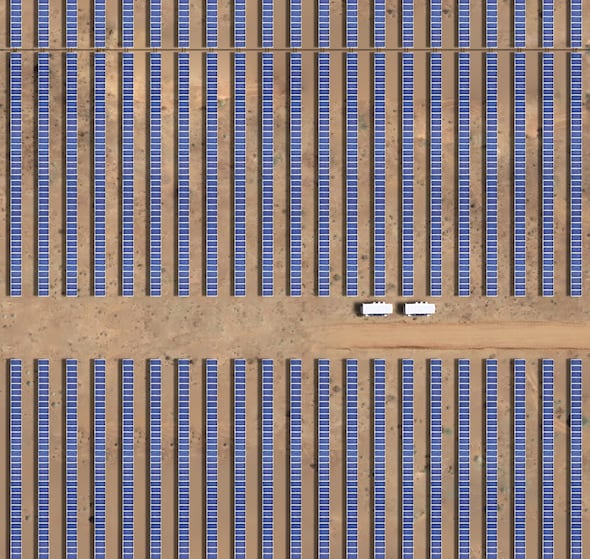The pioneering Degrussa solar and storage project – at one time one Australia’s largest integrated off-grid solar and battery storage plant – is being pulled down, less than eight years after it was commissioned to help power a copper mine in remote Western Australia.
The Neoen-owned project, combining 10.6MW of single axis tracking solar and a 6MW/1.4MWh battery – was designed to cut the use of diesel fuel at Sandfire Resources’ Degrussa mine by around five million litres a year.
“This is the largest integrated off-grid solar and battery storage facility in Australia and draws together a number of technologies which are widely expected to have a transformational impact on the global economy over the next decade,” said Sandfire managing director Karl Simich at the project’s launch in 2016.
“These include solar power combined with a state-of-the-art lithium-ion battery storage facility, which has been used for the first time in a remote location.”
But after years of supplying around 20 per cent of the mine’s energy needs – and LCGs to Origin Energy through a 2016 PPA — the copper is all gone and the main customer gone with it, and Neoen has decided that the project’s time has come.
“Neoen can confirm that the Degrussa Solar Farm is in the process of being decommissioned,” a spokesperson told RenewEconomy in a statement on Friday.
“Neoen intends to remove the solar panels, as well as the rest of our facility and to rehabilitate the site.”
The big question, now, is what becomes of Degrussa’s 34,080 solar panels.
“Neoen’s preference is for the solar panels to be reused as they remain in good condition,” the spokesperson said.
“We are currently investigating opportunities to find a second life for the solar panels and for the other main components such as the inverters, transformers and the battery pack.”
A green mining showcase
As well as generating power for Sandfire, DeGrussa was also intended to showcase how renewables and storage can reduce the immense cost, and pollution, from using diesel generators for remote operations like mines.
For this reason the project won the support of both the Clean Energy Finance Corporation (CEFC) and ARENA, with the two institutions combined contributing $35 million in finance and grant funding to the project.
A “knowledge sharing report” published in 2017 by ARENA and DeGrussa’s EPC contractor, Juwi, said that while all the stakeholders in the project had relevant experience, “none had experience constructing a ‘large scale Solar-Hybrid System on a mine site’.
“As such there were inefficiencies due to the level of ‘new development’ required for documentation, processes and procedures,” the report said.
Perhaps a result of this collective inexperience, and the aforementioned “inefficiencies,” DeGussa suffered a major blackout in 2016 – believed to be from problems at the mine’s 19MW diesel generator. Even more unfortunately, the fallout from the blackout then sparked a major legal dispute between Juwi and Neoen.
Bigger and better
Since the commissioning of Degrussa, the use of a mix of solar, batteries and even wind power is becoming standard fare at remote mine sites, as the resources industry seeks to cut emissions and costs, and as the renewables industry hones its skills.
EDL’s microgrid at the Agnew gold mine in Western Australia’s northern Goldfields region, commissioned in 2021, combines five wind turbines (for a total of 18MW), a 4MW solar farm and a 13MW/4MWh battery energy storage system to provide an average of between 50-60 per cent of renewables for that mine.
At the other end of the scale, Zenith Energy is building a 95MW hybrid power station to power the Kathleen Valley lithium mine in what is being described as the largest off-grid wind-solar battery storage power station for a mining operation in Australia.
That project will combine 30MW of wind from five 6MW turbines, 16MW of solar PV and a 17MW/19MWh battery energy storage system, as well as synchronous condensers to provide critical system stability and resilience.
There will also be 27MW of gas generation and 5MW of diesel standby capacity, but the renewables are expected to be able to run in “engine off” mode for significant periods of time.










